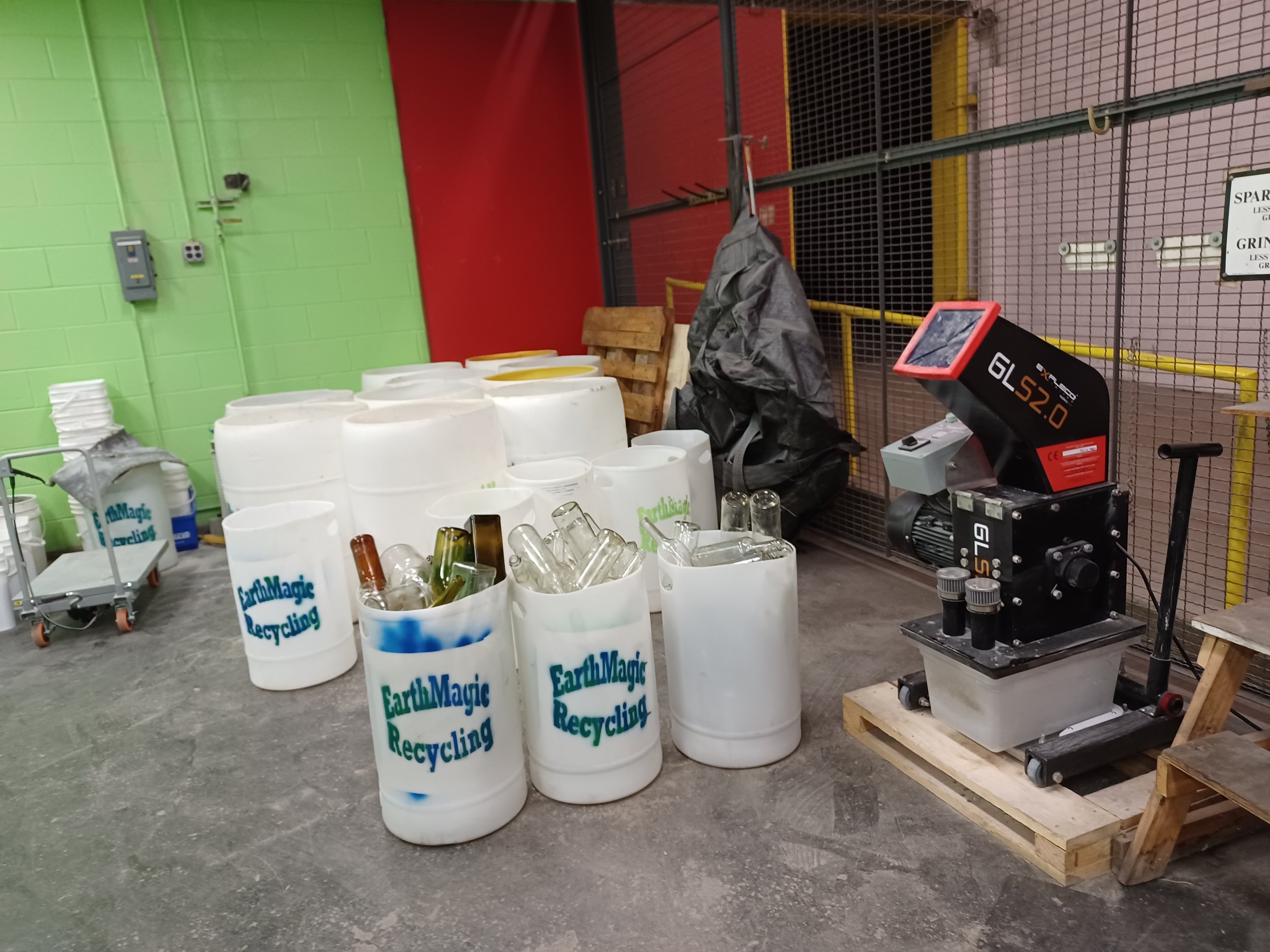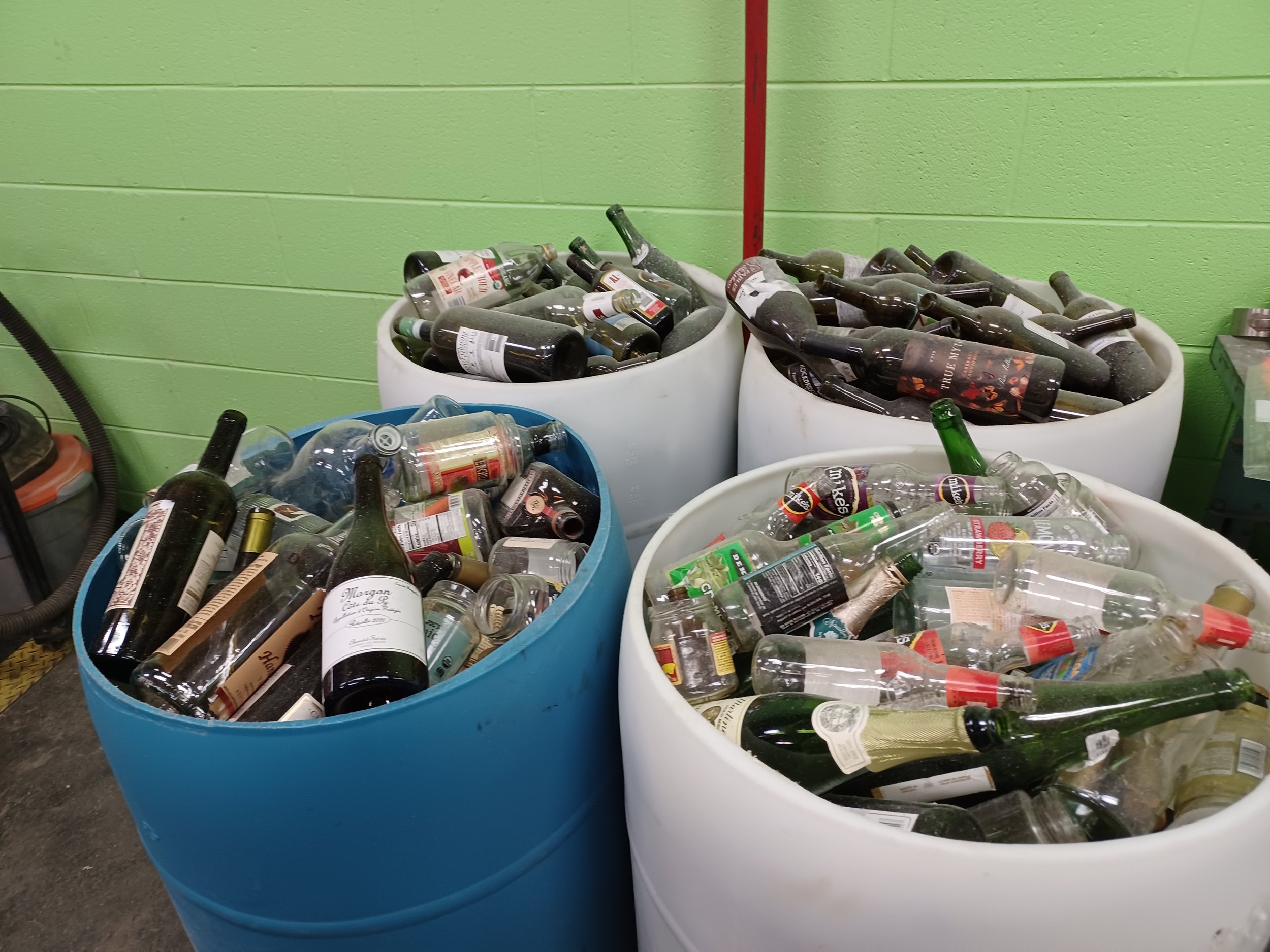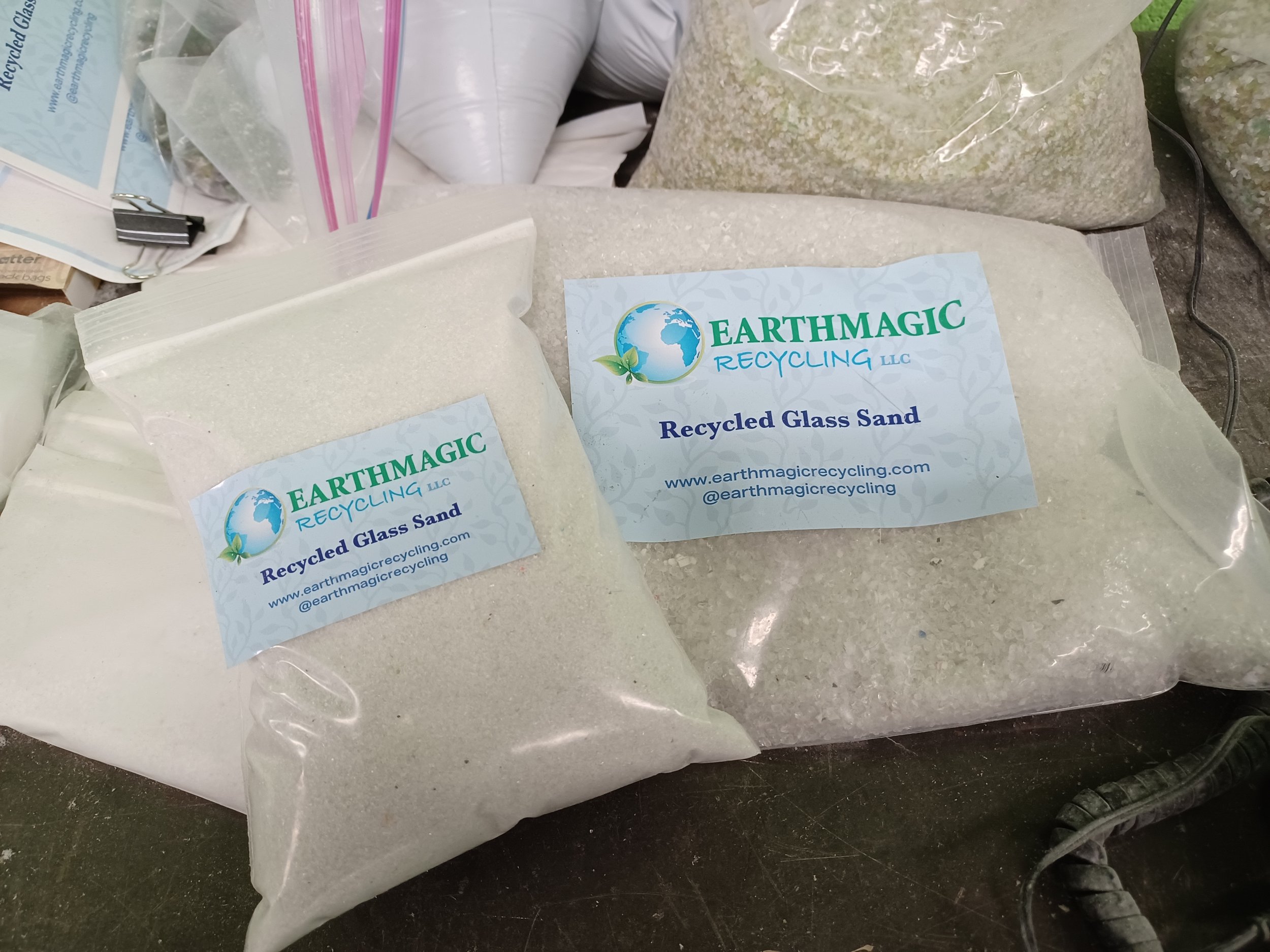
Our Process
We share our data with local areas for recording and reporting for DEQ. EarthMagic Recycling is hopeful this will assist with raising the glass recycling rates in Virginia. The rate is currently at 15%. There is room for improvement.
Types of Recycled Sand
-
Utility Sand
Utility sandbags and Tube sandbags have some paper material included. Both products are standard with a blend of all colors and all sand sizes. These could be used for construction, flooding, stormwater or wastewater diversion, weights, etc.
-
Decorative Sand
Decorative sand is used in crafts, mixed media art, gardening projects inside and out, as therapy sand, to assist those with sensory challenges, and more. Who doesn’t like to play in the sand!
-
Recreational Sand
Recreational sand is primarily used for outdoor projects such as landscaping, walkway accents, public trails, etc. It is available by the ton for special orders.
-

Step 1: Collection
We accept clean food and beverage glass. - please remove the tops and rinse the items. The labels can be removed - we really appreciate it - or left on. The glass needs to be clean and dry to protect our equipment and to produce clean sand for your projects, from crafts to construction. The glass is weighed, and we share the data with local areas for recording and reporting for DEQ.
Items we cannot accept include decorative glass, mixed color glass, dirty glass or glass with food waste, ceramics or dishware, pyrex and other heat-resistant glass, window (plate) glass, mirrors, and candle containers.
-

Step 2: Cleaning
We manually sort and process our donations to prepare them for the machines.
Labels, tops, and aluminum collars/foil must be removed from most bottles and jars by hand - this is labor intensive, and why we request clean, dry, and unbroken glass.
-

Step 3: Crushing
The GLS 2.0 is the beast that crushes the glass, rendering it safe and tumbled. The machine's hammermill system creates sand colored by the crushed bottles.
Green, clear, and brown are the most common glass colors. Cobalt blue, emerald and leaf green, amber, ice blue, sea green, and sky blue are colors we get in smaller amounts and are saved until there is enough for a full run through the GLS 2.0.
-

Step 4: Sorting
The crushed sand goes into the LV Screen and vibrates down through the screens. This machine sorts the sand into five different particle sizes ranging from as fine as baby powder to pieces about 1/4 inch in size. Its amazing how soft sand can become from crushed glass.
-

Step 5: Bagging
Our sand products are packaged and added to the inventory available in our online store or for custom orders.
-
Step 6: Sell to You!
With our commitment to sustainable practices and continuous improvement, we deliver exceptional recycling outcomes while minimizing environmental impact.
FAQs
-
When you toss glass in a recycling bin instead of a trashcan, you save natural resources like sand, limestone and soda ash, help in keeping waste out of landfills, and also remove the costs of transportation in moving these heavy items.
-
Unlike many other recyclables like plastic & paper products, glass can continually go through the recycling process and maintain its integrity. This makes glass products one of the most environmentally safe sectors as they are infinitely recyclable.
-
What does it mean to be 100% recyclable? It means that all parts of the glass products can be recycled! Many other recyclables need to be sectioned to remove parts that cannot be used in the recycling process, while all parts of glass products can be re-used endlessly.
-
Recycled glass is processed into a form called “cullet”, which is essentially powdered glass. This cullet resembles sand and is furnace-ready recycled glass material used for production.
-
Over 3 MILLION TONS of recycled glass is purchased annually!. That is a lot of glass!
-
The cost savings of recycling is in the use of energy.
Glass produced from recycled glass reduces related air pollution by 20% and related water pollution by 50%.
Recycling glass reduces the space in landfills that used bottles and jars would otherwise take up.
-
Glass is a fully recyclable material. We can recycle glass over and over endlessly without loss in quality or purity. Recycling glass has enormous environmental benefits, including reducing carbon emissions, raw material consumption, energy use, and waste. Every 6 tons of recycled container glass used reduces carbon dioxide emissions by 1 ton. Recycling one ton of glass saves about 2,000 gallons of oil, 1,500 pounds of coal, or 100 cubic yards of landfill space.
